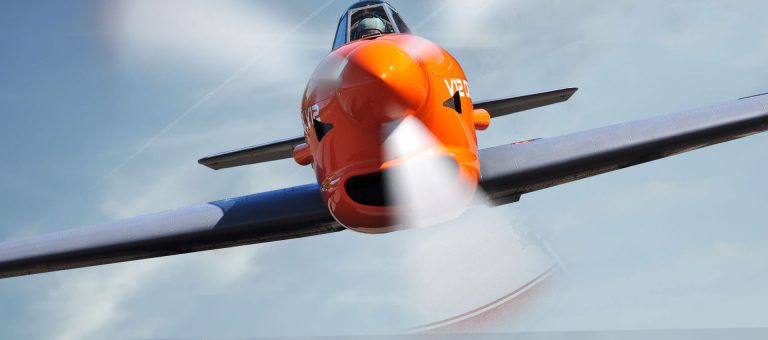
First flown in 1976, The Yak-52 is a two-seat, single-engine monoplane, designed by Aleksandir Sergievich Yakovlev. It was first developed in the Soviet Union before it’s manufacture was transferred to Aerostar in Romania, which oversaw an output of over 1800 aircraft. The Yak-52 was developed as a basic training aircraft for pilots in the former Warsaw pact countries. These pilots would go on and fly more advanced trainers
Summary
• Country of origin: USSR/Romania
• Cockpit: 2 seats
• Wingspan: 930cm
• Empty weight: 1015kg
• Max take Off Weight: 1305kg
• Take-off distance: 300 metres
• Landing distance: 260 metres
• Cruise Speed: 104 kts
• Range: 300nm
Key features:
• Fixed speed propeller.
• Retractable undercarriage.
• Fully aerobatic.
• Optional auxiliary fuel tanks.
Many of the systems inherent in the aircraft are direct representations of what one would expect to find in more advanced Soviet military models, including the fuel system and pneumatically powered brakes and undercarriage. As a result the aircraft performance matches its original purpose. Namely excellent controllability with the ability to perform continuous, high energy aerobatics designed to simulate combat manoeuvres.
Following the dissolution of the Soviet Union, it quickly grew in popularity, and over 300 have since been exported as a cheap and affordable way for western pilots to get their hands on a ‘Warbird’. It offers relatively high performance at a low price point. Yak-52’s now appear on civil aircraft registers of many European countries, alongside the USA and even as far as Australia and New Zealand.
Due to it’s origins and history there was a fear that parts and maintenance could present issues to potential purchasers, however since it has been embraced by the western pilot market as a popular choice, it is pleasing to see that Yak-52 parts are readily available, in some cases from new.
The Yak-52 primary purpose was as a training aircraft. As a result the aircraft features two seats in a front and rear configuration. Normally the pilot sits in the front with the instructor at the rear. Regardless of seating position, the aircraft has dual controls and instrumentation. The greenhouse style canopy affords excellent visibility, aiding visual navigation.
The tricycle style landing gear is designed to give the same landing characteristics as a more basic trainer. In its former life in the USSR the Yak-52 was designed to land on a variety of surfaces, it is normally certified to land on grass and unpaved airfields, and excels in its operation into shorter fields. Stall characteristics, both in its incipient stages and recovery are not subtle. With a retractable undercarriage and constant speed propeller, it is a good introduction for those looking to advance into complex aircraft.
As expected from a former Soviet trainer, the Yak-52 is fully aerobatic, aggressively so. It has a fearsome roll rate of around 120 degrees per second and is capable of sustained inverted flight. The aircraft is an entirely all metal construction. As a result, the airframe can withstand G-loads from +7G all the way down to -5G. It’s climb performance is also noteworthy. With a full fuel load and two occupants, it can achieve up to 1800 feet per minute dependant on engine fit. Additional options are available for competition and displays, including a smoke system.
Newer Yak-52 aircraft can be modified, The latest variants have the option of adding auxiliary fuel tanks, post production, enabling an increase in range. With the excellent views afforded by the canopy, the ability to land on various surfaces and short field capability, combined with a decent fuel endurance the Yak-52’s also occupy a niche as a high performance and eye-catching tourer.
The Yak-52 was designed as an aerobatic trainer for students in the Soviet DOSAAF training organization, which trained civilian sport pilots. Currently, the Yak-52 is used in the Fédération Aéronautique Internationale (FAI) World Aerobatic Yak 52 Competition, a popular powered aircraft one-design World Aerobatic Championship.